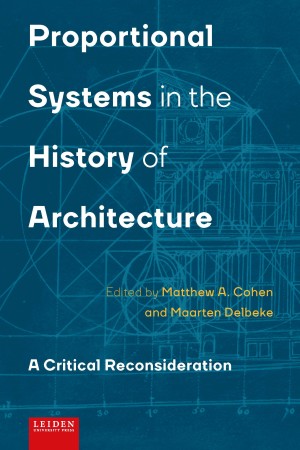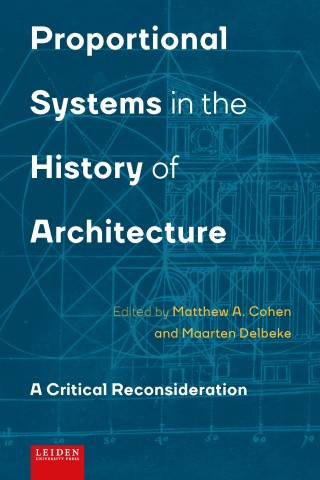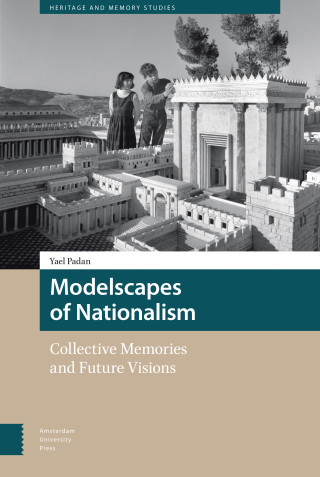Contents
I. Introduction
Chapter 1: Two Kinds of Proportion (Revised)
Matthew A. Cohen
II. Thinking and Seeing Proportion
Chapter 2: Canons of Proportion and the Laws of Nature: Observations on a Permanent and Unresolved Conflict
Mario Curti
Chapter 3: The Composto Ordinato of Michelangelo’s Biblioteca Laurenziana: Proportion or Anthropomorphy?
Caroline van Eck
Appendix: The Problem of Movement in Mannerist Architecture (1933), by Rudolf Wittkower. Translated by Caroline van Eck.
Chapter 4: Subjective Proportions: 18th-Century Interpretations of Paestum’s “Disproportion”
Sigrid de Jong
Chapter 5: Were Early Modern Architects Neoplatonists? The Case of François Blondel
Anthony Gerbino
Chapter 6: Plotting Gothic: A Paradox
Stephen Murray
Chapter 7: To Build Proportions in Time, or Tie Knots in Space? A Reassessment of the Renaissance Turn in Architectural Proportions
Marvin Trachtenberg
III. Designing with Proportion
Chapter 8: 1, 2, 3, 6: Early Gothic Architecture and Perfect Numbers
Elizabeth den Hartog
Chapter 9: Proportion and Building Material, or Theory versus Practice in the Determination of the Module
Lex Bosman
Chapter 10: Approaches to Architectural Proportion and the “Poor old Parthenon”
(Mark Wilson Jones)
Chapter 11: Scamozzi’s Orders and Proportions: An End to Illusions or a Visionary Harbinger?
(Franco Barbieri)
Chapter 12: Early Modern Netherlandish Artists on Proportion in Architecture, or “de questien der Simmetrien met redene der Geometrien”
(Krista De Jonge)
Chapter 13: Proportional Design Systems in 17th-Century Holland
(Konrad Ottenheym)
Chapter 14: The Matrix Regained: Reflections on the Use of the Grid in the Architectural Theories of Nicolaus Goldmann and Jean-Nicolas-Louis Durand
(Jeroen Goudeau)
Chapter 15: Dynamic Unfolding and the Conventions of Procedure: Geometric Proportioning Strategies in Gothic Architectural Design
(Robert Bork)
Appendix: The Geometry of Bourges Cathedral
IV. New Approaches to Well-Known Sources
Chapter 16: Divining Proportions in the Information Age
(Andrew Tallon)
Chapter 17: Decoding the Pantheon Columns
(Gerd Graßhoff) and (Christian Berndt)
Chapter 18: Leonardo da Vinci: The Proportions of the Drawings of Sacred Buildings in Ms. B, Institut de France
(Francesco P. Di Teodoro)
Chapter 19: Philibert de L’Orme’s Divine Proportions and the Composition of the Premier tome de l’architecture
(Sara Galletti)
Chapter 20: An Old Problem? Claude Perrault’s Views on Beauty and Proportion in Architecture and French Aesthetic Theory
(Maarten Delbeke)
V. Twentieth-Century Perspectives
Chapter 21: Le Corbusier’s Modulor and the Debate on Proportion in France
(Jean-Louis Cohen)
Appendix 1: A Timely Book (1927), by Le Corbusier. Translated by Genevieve Hendricks.
Appendix 2: Regulating Lines (1934), by Le Corbusier. Translated by Matthew A. Cohen and Maarten Delbeke.
Chapter 22: Between Looking and Making: Unravelling Dom Hans van der Laan’s Plastic Number
(Caroline Voet)
Chapter 23: Rudolf Wittkower versus Le Corbusier: A Matter of Proportion
(Francesco Benelli)
Chapter 24: Proportional Systems in the History of Architecture: A Conversation with James S. Ackerman
(James S. Ackerman and Matthew A. Cohen)
VI. Conclusion
Chapter 25: Ten Principles for the Study of Proportional Systems in the History of Architecture (Revised)
(Matthew A. Cohen)





